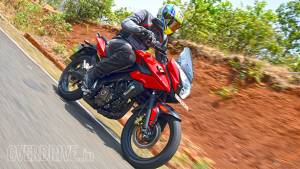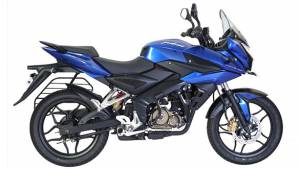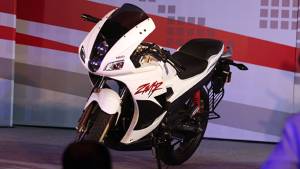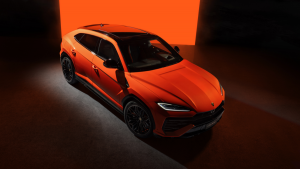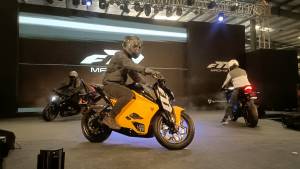Comparo: Hero Karizma ZMR vs Bajaj Pulsar AS 200
How hard can it be to make a touring motorcycle, eh? All it needs to do, literally, is to lope down the open road. And when the first motorcycles were created, people like Robert E Fulton Jr, took their rudimentary steeds and toured. Fulton was born in 1909 and he decided he was a student of architecture. He took a field trip to see the buildings. He went 40,000km from London to Tokyo in 18 months, shot 40,000 feet on film (we are told), wrote a book about it - One Man Caravan. His motorcycle? A Douglas twin. The point is, it can be done on anything.
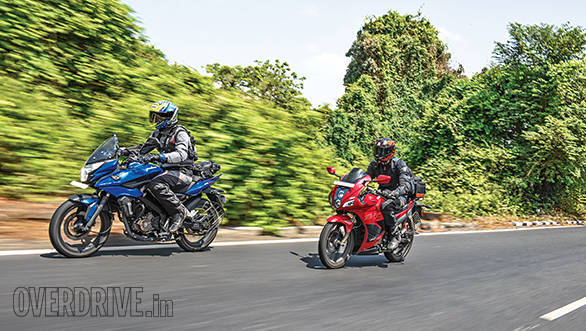
But we live in an age of specialisation, don't we? Your dentist can't cure a headache and a rocket scientist may or may not be able to make a decent bechamel. So while there are smirking lads on beat up Fieros who've already navigated our vast country, many of us believe we need a more purpose built tool for the long distance work.
The Hero Honda Karizma (back in the day) was the first modern motorcycle to be hailed as a proper open road motorcycle. It was among the fastest of motorcycles on the market, had an unstressed engine and since it was born off the rib of the CRF230, it seemed quite happy to trundle on after the road ended as well.
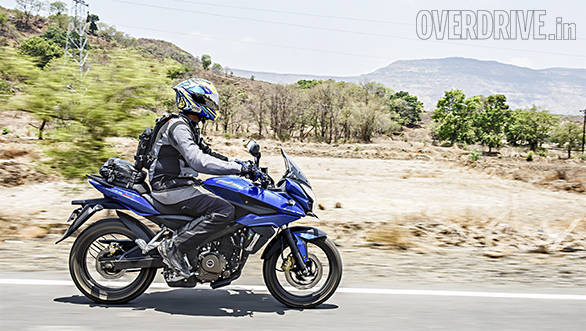 The AS 200 looks distinctive and performs well
The AS 200 looks distinctive and performs well
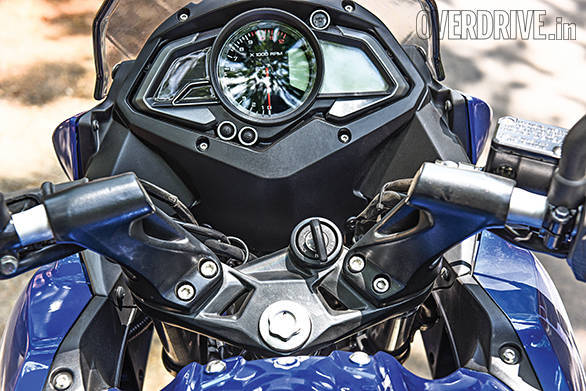 Tall bars on massive risers, footpegs tucked not too far back and a tall screen give the AS 200 excellent ergonomics for hours of riding
Tall bars on massive risers, footpegs tucked not too far back and a tall screen give the AS 200 excellent ergonomics for hours of riding
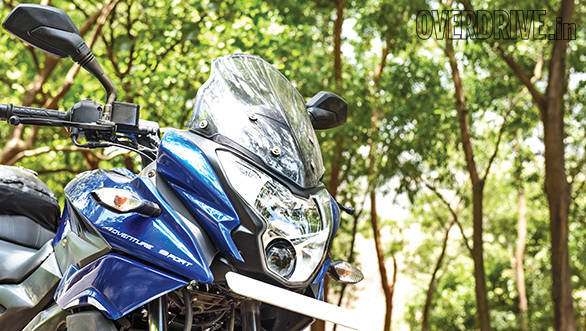
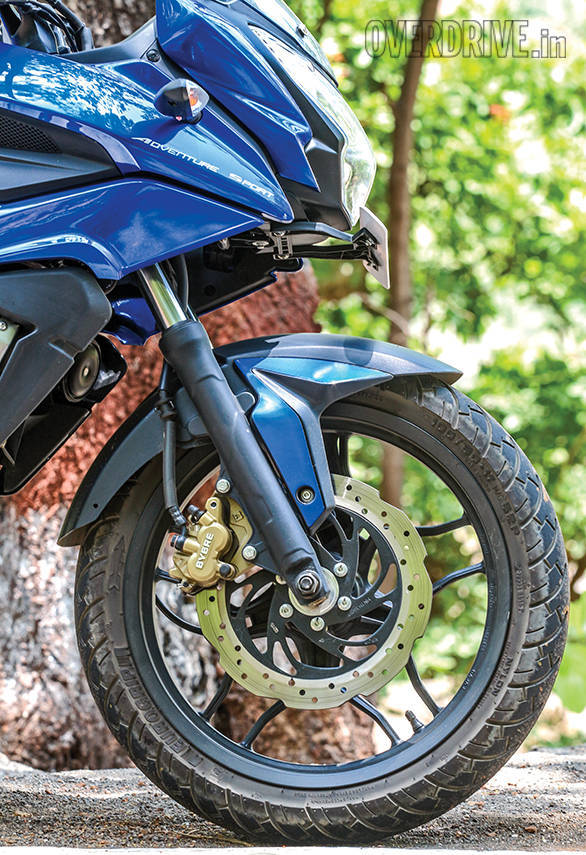 The OE Eurogrips are adequate
The OE Eurogrips are adequate
But since then, the touring motorcycle has been a less-visited place. But when we rode the Bajaj Pulsar AS 200 last month, we ignored the appearance of the word 'Adventure' in its moniker and zeroed in straight on how nice the bike felt as an open road mile muncher. Naturally, the next step was to see if the updated and more powerful Hero Karizma ZMR and the newly minted Bajaj were as highway friendly as we imagined them to be.
But you hit hurdles that tell you clearly that neither Hero nor Bajaj have actually thought of their bikes as anything but premium commuters in role terms. For example, Rishaad and I mounted Rynox's new Hawk tail pack (on test) and my long suffering Kriega 10-litre tail pack (benchmark) for our 400km day out on the bikes. But as soon as we started, we noted that neither motorcycle offers convenient bungee points. You're left with the usual hacking - use the hole in the passenger heel guard, loop around the tail unit that carries the numberplate, saree guard bars and so forth - to mount your bags. Similarly, touring friendly digital features like a countdown to empty, tank range are missing from both. However, both showed us on our day out that they're good highway machines.
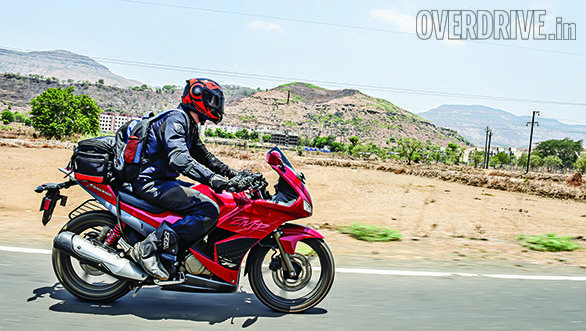 The Hero is a long motorcycle - look how Rishaad's backpack fits neatly ahead of the tail bag
The Hero is a long motorcycle - look how Rishaad's backpack fits neatly ahead of the tail bag
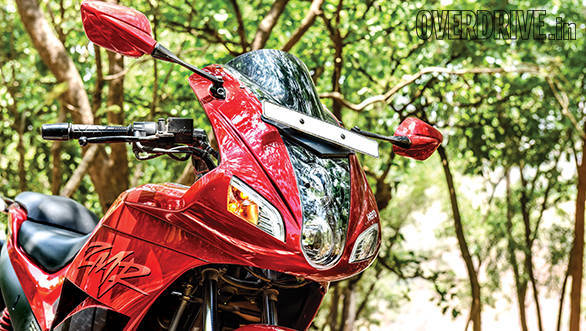 The looks of the Karizma, well, are unique
The looks of the Karizma, well, are unique
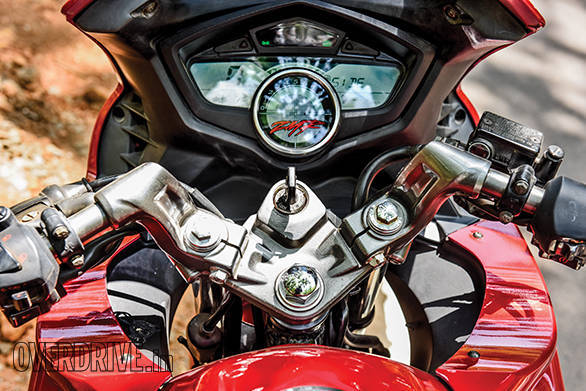 Still a comfy bike, the bars of the Karizma are lower and farther forward which is a sportier riding position
Still a comfy bike, the bars of the Karizma are lower and farther forward which is a sportier riding position
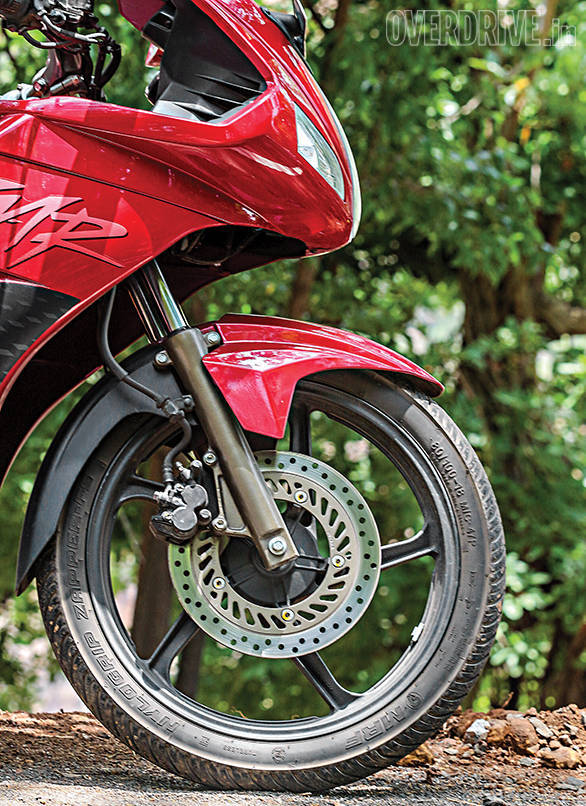
Rishaad, for reasons still unknown to human civilisation, plonked the new Rynox bag on the Karizma and claimed it for the first half. I shrugged and got the AS 200 Kriegafied and ready to roll. As we headed out of Mumbai's chaos, the AS 200 felt good. It may have a 25PS engine in there, but unlike the 200 Duke, the AS feels a lot calmer and there's quite a bit of torque in the mid-range. It felt almost wrong to pass the nutter on his P220 who was slicing and dicing through the lanes with this incredibly calm, but very fast, AS 200. But you know it had to be done.
Lesson taught, I settled into a 100kmph cruise that comes easy on the AS 200. The motorcycle is relatively vibration free through most of the rev range though I have to note that at just under 2,000km, our test bike was already a-rattle and feeling less fresh and together than the test bikes we rode in the past issue. As I would realise later when I swapped back to the ZMR, the story isn't too different there. The Karizma's panels don't rattle quite so much, but there's strong vibration at near 100kmph cruising speeds in the pegs, bars as well as through the tank. The old Karizma wasn't entirely vibration free as it is, but the bump up in compression and power has made the vibes more noticeable. Then again, our Karizma did have a phase early in its life with us when the mirrors would not stay on and the heat shield kept falling off. Thankfully, it has settled into a more steady, trouble free existence.
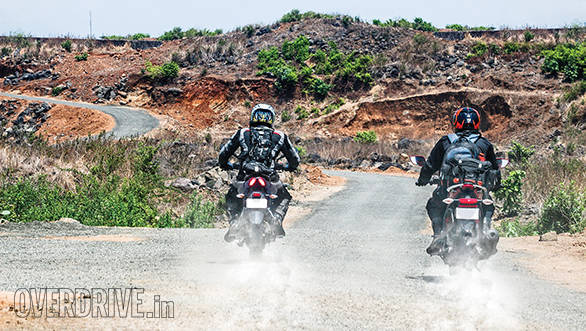
The essential thing about a touring motorcycle has to be a blend of three things. First and most crucial, the ability to go far quite fast. In India, I'd say the ability to cruise at 100-120kmph is enough. This presumes a top speed that's noticeably higher. The ZMR and the AS 200 hit 127.83 and 138.21kmph flat out so both can cruise. At speed, vibration should be minimal and there should be enough torque on demand to be able to manage a reasonably swift overtake without having to downshift. In fact, if you look at the numbers you will see that the Karizma actually accelerated just a hint quicker than the Bajaj. Surprised? We were, but then when I thought about it, I realised that the taller gearing for the Bajaj produces that longer legged feel that makes the AS 200 feel like a highway machine.
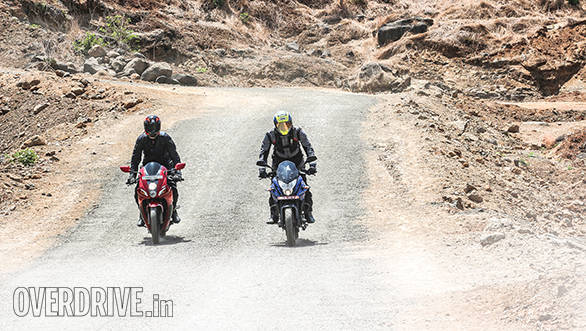
Second is a reasonably large tank range. In my experience, about 240-280km is enough because riding stints longer than that is hardcore rider territory and not many have the gluteous fortitudinous to manage that. On this front, both motorcycles do well too. The Karizma actually shocked us by managing 51.6kmpl (780km range) on the highway (under our highway test, not at our significantly faster cruising speeds) and the AS 200 manages an eminently useable 42.3kmpl (508km range) on the same test. Both bikes should easily return the big distance you'd like between tankfuls no matter how hard you ride.
The third thing is the ability to remain comfortable towards the end of the ride. Once the freshness of the morning has waned, the body is more tired and the long hours have given the brain time to focus on all the bits that're now aching.
Here, there are issues. The ZMR's vibration will, a few hours in, numb the hands and whenever you stop, the tingles will follow you around for a while. The AS 200 doesn't bother your hands so much, but the foam of the seat is a but too soft and that might feel great initially, but give it a few hours and it'll hurt. On the flip side, the ZMR is as long as a romantic comedy. Which allows a stunning amount of place for luggage to be mounted without it ever inconveniencing the rider. In fact, Mody had a kitchen sink in his trusty backpack as usual but on the Karizma, the Rynox bag sat on the pillion seat without the sink causing any friction. The AS 200 is generous enough - especially compared to the likes of the cramped KTMs - but nothing in the Indian market has the space the Karizma has.
However, the Karizma's length can also be troublesome. Put heavy luggage that far from the centre of gravity and you will feel it. Unloaded, the Hero is a nice handler. It's too long to be called sharp or alert, but the essence of the neutral, capable frame remains more or less unharmed. Turn in to corners is satisfying and it's fairly trustworthy leaned well over in the corners as well. Trouble is primarily that you never feel fully connected to the motorcycle. Add a big heavy bag at the back and fast bumpy corners or tight sharp ones both produce that odd feeling, like the motorcycle is steering slower than you thought it should. You get used to it and the ZMR never really misbehaves but you sense that the keenest handler the ZMR isn't.
The AS 200 is the diametric opposite. It's sprung a bit stiffer and the Bajaj pressed steel spar frame works quite well. It gives the AS 200 an unhurried but very assured poise that's lovely in the corners. It's perhaps this sort of handling that makes the bike feel so highway ready. As I noted at the first ride, I'm convinced that better rubber than the OEM Eurogrips - they're not bad but the chassis has more to give - would return even more feeling and confidence from the AS.
The stiffer nature of the AS 200 does stand it in good stead once the road goes bad too. It isn't as absorbent as the Karizma, but it feels solid, absorbs enough for you to not have to back off and you can stand up on the pegs and ride it through without undue effort. The Karizma on the other hand is an interesting blend of sensations. Despite the fairing, it doesn't feel fragile and the suspension's very soft which smooths out a lot of the bad stuff. But the ergonomics package is odd and the long reach to the bars makes standing up harder than it has to be. The wheelbase, again, is slightly more work when you're dodging potholes but it also makes the motorcycle less likely to wander on loose gravel.
Having climbed to the top of a dam on one of these loose gravel roads, Rishaad and I swapped motorcycles and I set out for the return leg on the Hero. And I immediately realised one more way that the Bajaj and the Hero are different.
Despite the absence of any engineering to go with the Bajaj's clever name, the AS 200 comes across as having a sorted character. It's fast but calm and it has the aura of a highway motorcycle. The Karizma is more confused. The platform began with a beginner dirtbike and you can feel that in how easy the Karizma is to ride on dirt roads. It's an ex-Honda platform too and you sense that in the calm way it slices through traffic and how friendly it feels most of the time. But the updates have brought more power as well as more vibration. The styling is odd and awkward. The chassis feels a little too long. It all comes together to give you the sense of a confused motorcycle that's not quite clear about what it wants to be.
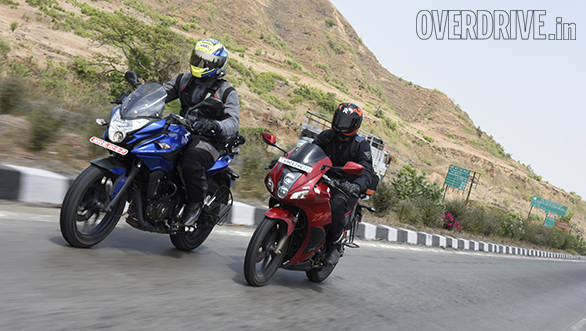
But at the end of the day, parked for the night, the Karizma clearly remains a motorcycle that's good on the open road. The fuel injected ZMR is priced at Rs 1.27 lakh on-road Mumbai. It needs some refinements but the potential is there and realisable.
But it cannot win this battle. The Bajaj AS 200 is over Rs 20,000 cheaper at Rs 1.06 lakh on-road Mumbai and it's a little bit quicker, fuel efficient enough and most importantly, it feels so much better as a touring motorcycle.
Hero Karizma ZMR vs Bajaj Pulsar AS 200
| Motorcycle | Bajaj Pulsar AS 200 |
| Engine type | Liquid-cooled triple spark single cylinder |
| Engine capacity | 199.5cc |
| Valvetrain | 4 valve SOHC |
| Max power | 23.5PS@9,500rpm |
| Max torque | 18.3Nm@8,000rpm |
| Power/Weight | 153.6PS/tonne |
| UNDERPINNINGS | |
| Suspension (F) | Telescopic fork |
| Suspension (R) | Preload adjustable gas-charged monoshock |
| Brakes (Front/Rear) | 280mm disc/230mm disc |
| Tyres (Front/Rear) | 100/80-17 / 130/70-17 tubeless |
| PERFORMANCE | |
| 0-60kmph | 4.98s |
| 0-100kmph | 14.23s |
| Top speed (kmph) | 138.21 |
| FUEL EFFICIENCY | |
| Highway (kmpl) | 42.9 |
| City (kmpl) | 30.9 |
| Overall (kmpl) | 33.75 |
| GENERAL DATA | |
| Wheelbase (mm) | 1,363 |
| Kerb Weight (kg) | 153 |
| Price, on-road Mumbai | Rs 1.06 lakh |
| Motorcycle | Hero Karizma ZMR |
| Engine type | Oil-cooled single cylinder |
| Engine capacity | 223cc |
| Valvetrain | 2 valve SOHC |
| Max power | 20PS@8,000rpm |
| Max torque | 19.7Nm@6,500rpm |
| Power/Weight | 127.4PS/tonne |
| UNDERPINNINGS | |
| Suspension (F) | Telescopic fork |
| Suspension (R) | Five-way adjustable gas-charged twin shocks |
| Brakes (Front/Rear) | 276mm disc/240mm disc |
| Tyres (Front/Rear) | 80/100/18 / 120/80-18 tubeless |
| PERFORMANCE | |
| 0-60kmph | 4.77s |
| 0-100kmph | 13.83s |
| Top speed (kmph) | 127.83 |
| FUEL EFFICIENCY | |
| Highway (kmpl) | 51.6 |
| City (kmpl) | 39.1 |
| Overall (kmpl) | 42.2 |
| GENERAL DATA | |
| Wheelbase (mm) | 1,350 |
| Kerb Weight (kg) | 157 |
| Price, on-road Mumbai | Rs 1.27 lakh |
Images by Varun Anchan
Related Stories
Top Stories
Latest Videos
Most Popular
- Budget Sportbike Showdown: Kawasaki Ninja 500 vs Aprilia RS 457 vs Yamaha YZF-R3
- 2014 Triumph Daytona 675 vs 2024 Kawasaki ZX6R - A Decade of Evolution in Supersport Motorcycles
- Mumbai-Pune Expressway speed restrictions updated
- Nissan Magnite EZ-Shift review - is the AMT any good?
- Nitin Gadkari states that tax on Hybrids should be reduced to 12 percent in the coming future
